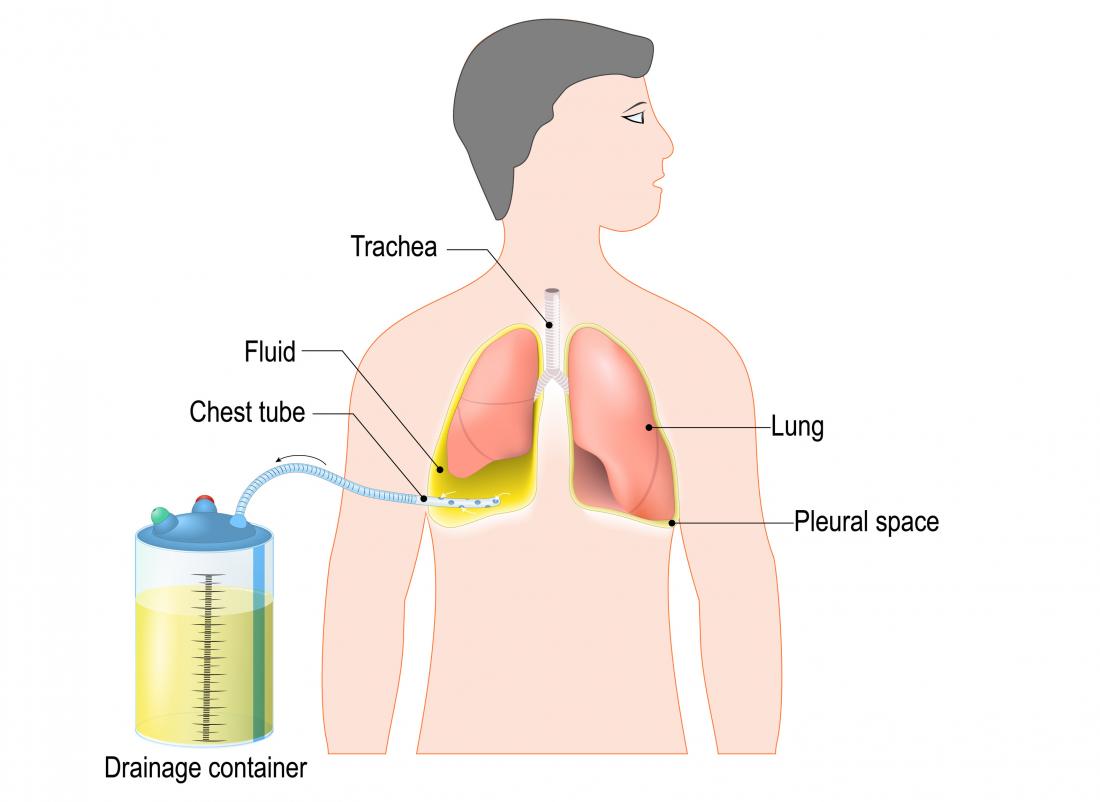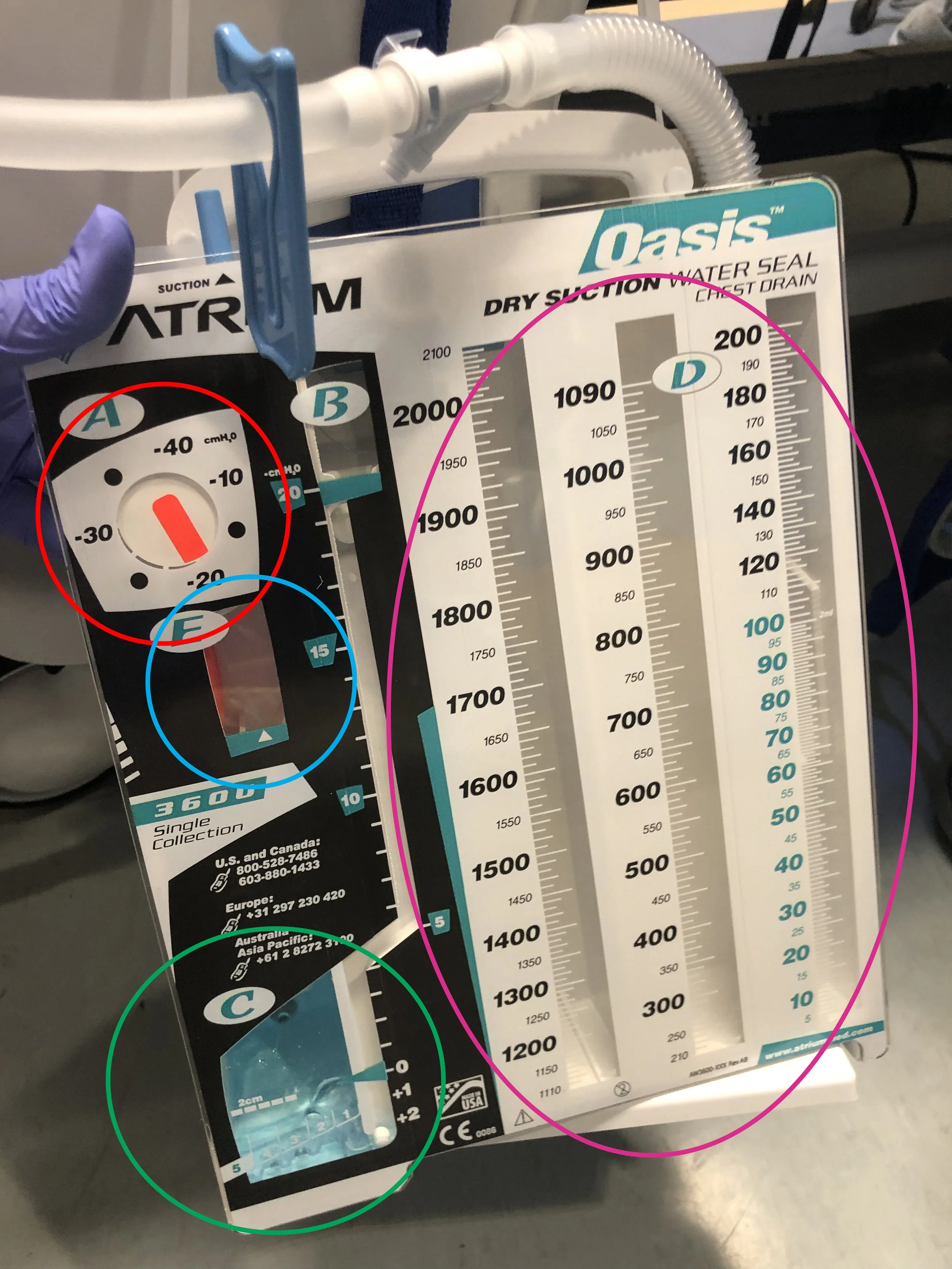all about chest tubes
Chest tubes are one of the procedures that we see sometimes but not as frequently as central lines, intubation. Because Piedmonts policy states that we must do 10 procedures a year to stay credentialed there is no way for us to get “credentialed” to do chest tubes, but it is something you can do with your attending. The most important thing when it comes to chest tubes is understanding how they work and how to troubleshoot them.
Indications for a chest tube
Pneumothroax (For unstable PTX should do needle decompression first)
Hemothorax
Pneumohemothorax
Pleural effusion
Loculated pleural effusions can sometimes be difficult; lots of pockets of fluid
Rarely - placed empirically prior to surgery near diaphragm
the anatomy of the chest tube setup
To the right you see two pictures: the first is a chest tube going into the patient (without full dressing) and to the right the reservior it dumps into. There is an extra line at each of these sites (circled in red) where you can -
obtain sample for culture
flush to get rid of clots
Here, the access is circled in red. It is closer to the insertion site
Here is the access closer to the reservoir
a chest tube to water seal
how to interpret a setup
There are three important things to look at when assessing a chest tube:
Is it to suction or water seal?
Blue circle: you will see a red spring here if it set to suction
this red spring will be absent if it is to water seal
The red circle indicates how much suction it is set to; here it is set to -20 cmH2O
Is there an air leak?
Look at the green circle in the picture; this will be bubbling if there is an air leak (see video below). This means there is still air coming from the patients chest - e.g. PTX is still present
How much fluid is there?
Fluid is held where it is circled pink. For pneumothorax, you will see very little/scant fluid; for pleural effusions/hemothorax, you will likely see lots. The reservoir holds 2 liters
To the right is an example of a chest tube set-up in action. This is a chest tube set to water seal (you know this because the red spring is not visible) and there is an air leak bubbling in the blue water. You will see the bead near the blue water bobble up and down - this is because the patient is on the ventilator and it is bobbling every time a breath is delivered.
Below is an example of the red spring coming out - indicating the chest tube is to suction. Although the nurses are responsible for changing the setting it also briefly mentions how to change the amount of suction.




